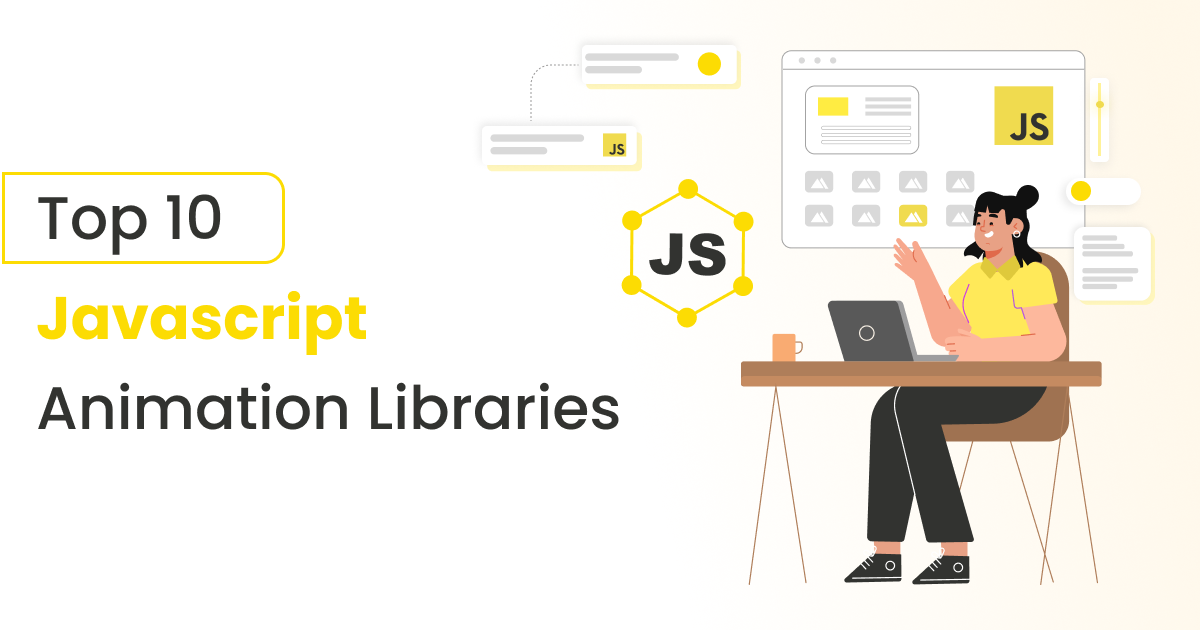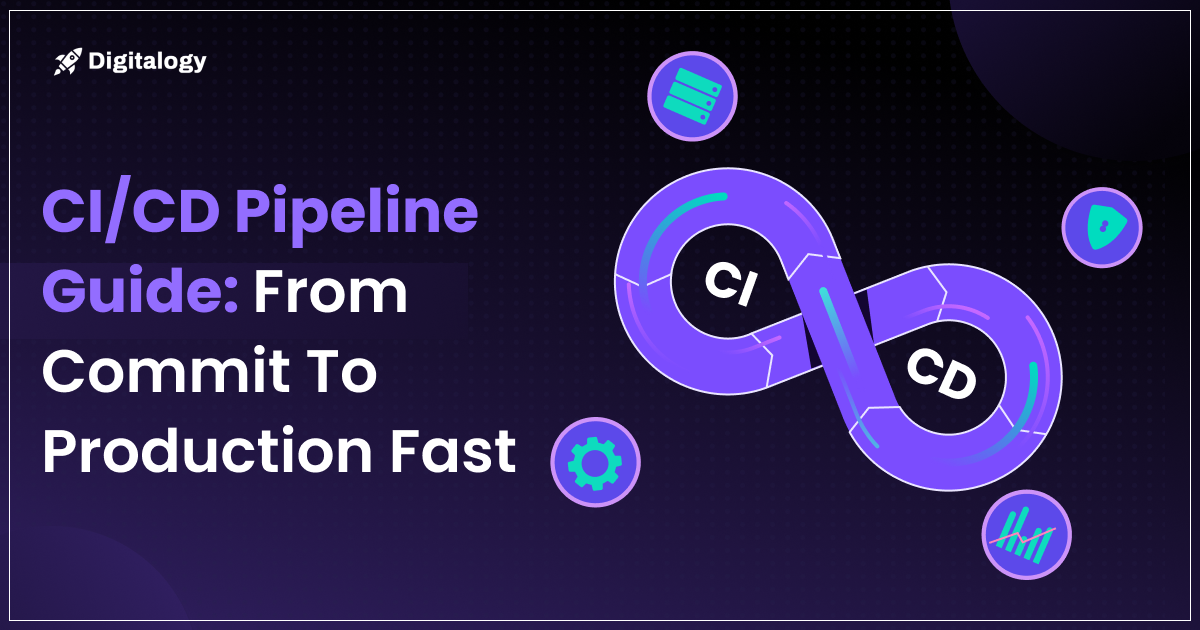JavaScript animation has evolved significantly, covering everything from simple text or image animations to complex 3D graphics using tools like WebGL. Numerous libraries support Canvas and WebGL, allowing developers to craft immersive, interactive experiences.
However, when adding animations, it’s crucial to prioritize performance and user experience. Overloading a page with excessive or overly intricate animations can slow performance and detract from the user’s focus. The key is to strike a balance, ensuring that animations enhance rather than hinder the overall experience.
As you explore the best JavaScript animation libraries to help you reach new heights in 2025, it’s also worth considering the best JavaScript alternatives for animation that might offer unique benefits or streamline your development process. Let’s discuss the top options available.
Let’s Check the Top 10 Essential Javascript Animation Libraries
1. Anime.js
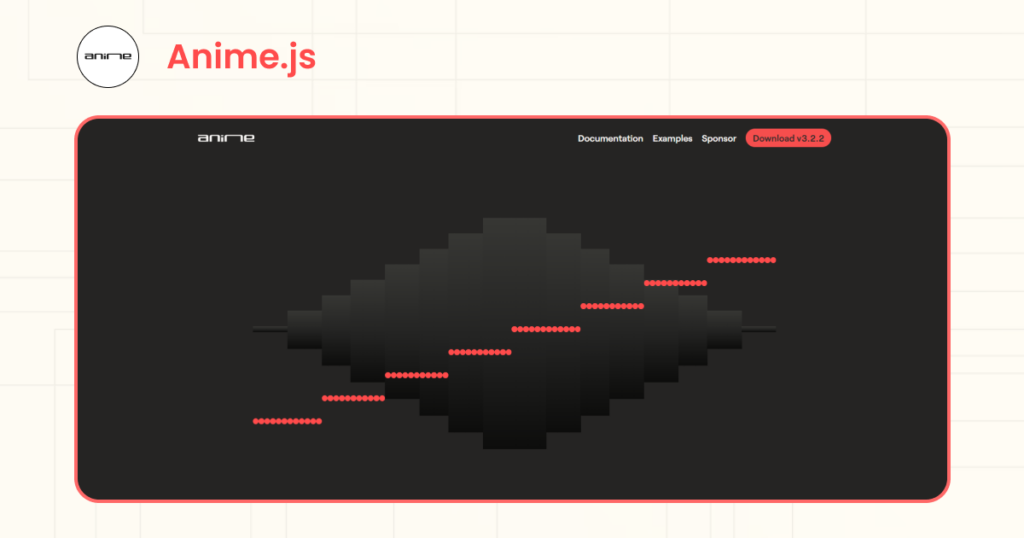
Anime.js is a lightweight and versatile JavaScript animation library that makes creating smooth and complex animations easy. It is widely praised for its ease of use and flexibility, allowing developers to animate CSS properties, SVG, DOM attributes, JavaScript objects, and more with just a few lines of code.
This Javascript library is especially popular for its ability to handle multiple transformations simultaneously and synchronize different elements in a single animation sequence. Anime.js supports modern browsers and provides powerful animation timelines, keyframes, and easing functions, making it ideal for simple transitions and intricate animation effects.
Features
- Easy-to-understand syntax for defining animations.
- Animates SVG elements seamlessly.
- Allows precise control over animation timelines.
Use Cases
- Ideal for creating dynamic animations on web pages.
- Enhances user experience through fluid animations.
- Animates interactive elements like buttons and menus.
2. Lottie by Airbnb
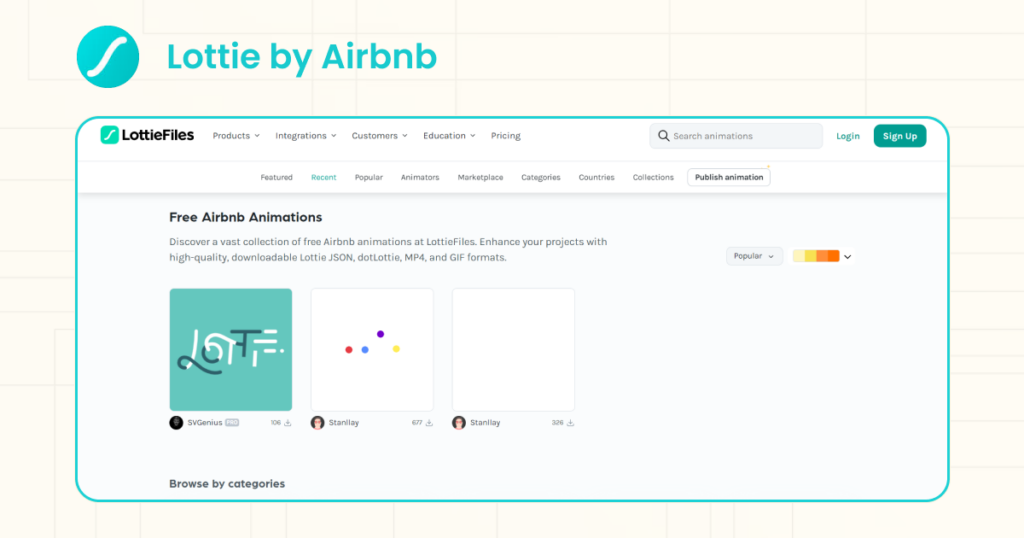
Lottie is an open-source animation library created by Airbnb that renders Adobe After Effects animations in real time as vector graphics. It allows Javascript developers to create and control high-quality, scalable animations across web, iOS, and Android apps.
Features
- Scalable vector animations that maintain quality across devices
- Cross-platform support (web, iOS, Android, React Native)
- Plays Adobe After Effects animations with high-fidelity
Use Cases
- Implementing rich, scalable animations in mobile and web applications
- Adding interactive animations to apps with precise control
- Enhancing UI/UX by integrating After Effects animations into user interfaces
3. GreensockJS (GSAP)
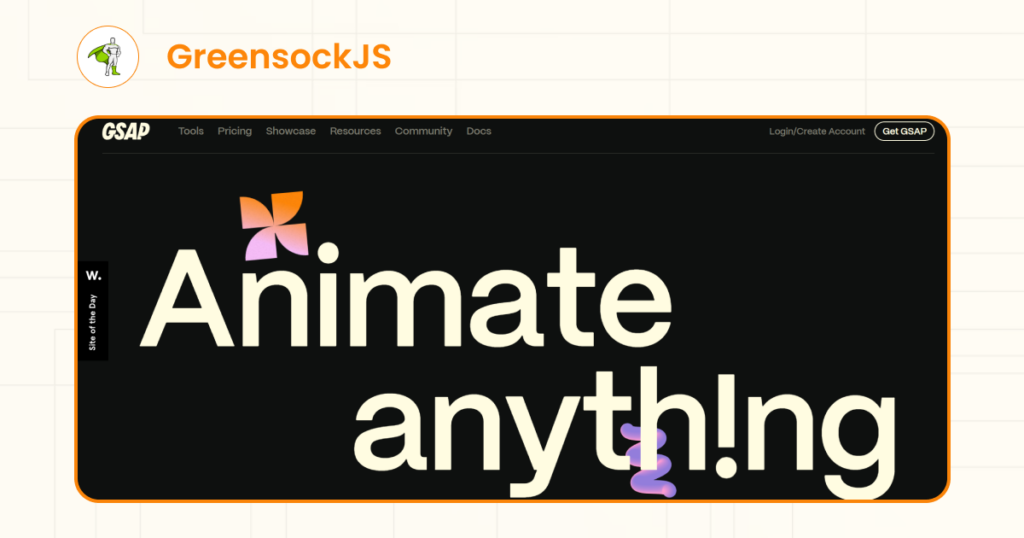
Greensock Animation Platform (GSAP) is widely considered the industry standard for high-performance animations in JavaScript. Trusted by major companies like Google, Apple, and Microsoft, GSAP offers feature-rich and battle-tested tools for creating professional-grade animations. Its modular architecture allows developers to quickly build everything from simple fade-ins to intricate, interactive sequences.
GSAP’s plugin ecosystem extends its functionality with specialized tools for handling physics-based animations, scroll-triggered effects, and more. With exceptional performance and cross-browser compatibility, GSAP is ideal for projects that demand precision and power, whether in rich media ads, interactive web experiences, or games.
Features
- Offers an extensive API for creating complex animations.
- Extensible through a variety of plugins for additional functionalities.
- High performance with smooth animations across browsers.
Use Cases
- They are used extensively to create interactive and engaging ads.
- Animates characters and game elements in web-based games.
- Animates data-driven visualizations and charts.
4. Kute.js
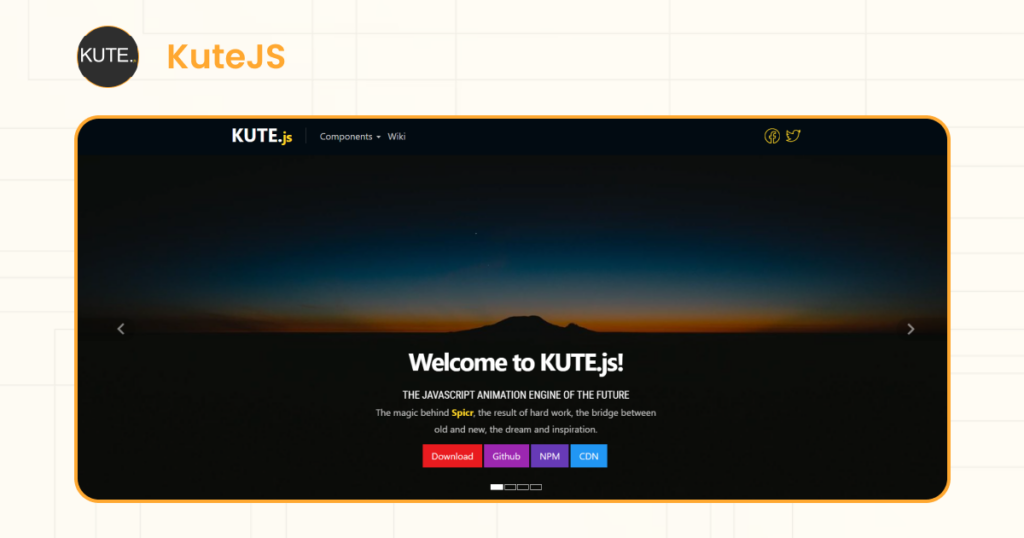
Kute.js is a fast and lightweight JavaScript animation library focusing on tweening and morphing effects. It provides developers with a simple way to animate DOM elements, attributes, and properties, including colours, shapes, and SVGs.
Features
- Supports advanced morphing of SVG paths
- Provides smooth transitions for CSS properties, attributes, and transforms
- Modular design allows you to load only the required features
Use Cases
- Creating SVG morph animations for logos and icons
- Animating DOM elements and CSS properties in web pages
- Smooth transitions between states in web apps
5. Theatre.js
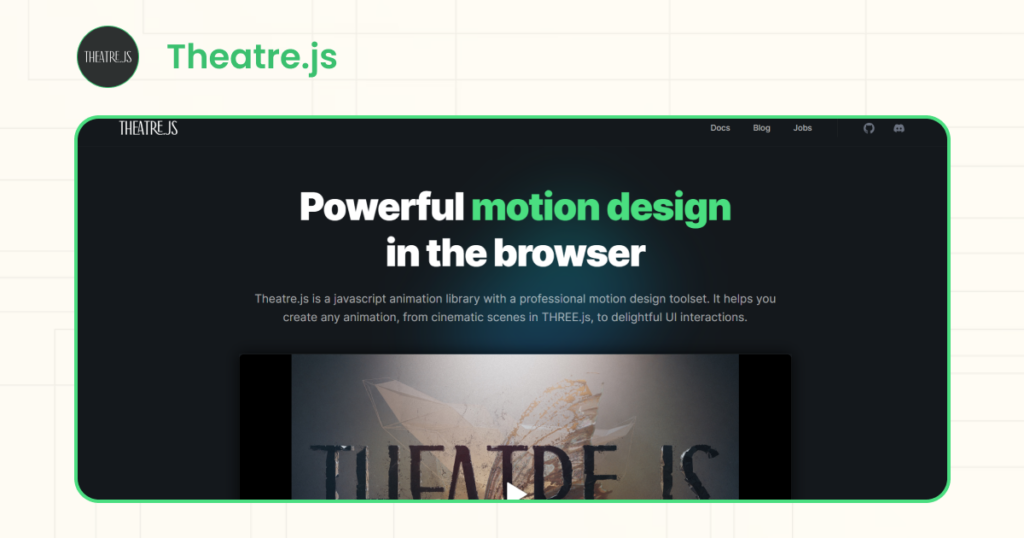
Theatre.js is an innovative JavaScript library that enables developers to choreograph complex animations using a timeline-based approach. Designed for animating DOM elements with an intuitive keyframe system, Theatre.js allows developers to orchestrate precise movement across multiple objects and scenes. Its robust timeline editor gives users fine-grained control over when and how animations happen, making it perfect for creating cinematic animations and interactive storytelling experiences.
Theatre.js integrates seamlessly with other animation tools and libraries. Its focus on creating detailed, choreographed sequences sets it apart as a tool for producing polished, professional-grade animations on the web.
Features
- Offers precise control over animation timelines.
- Manages multiple scenes and transitions between them.
- Supports keyframe-based animations.
Use Cases
- Ideal for creating narrative-driven animations.
- Enhances presentations with animated elements.
- Creates animated sequences for storytelling.
6. ScrollReveal
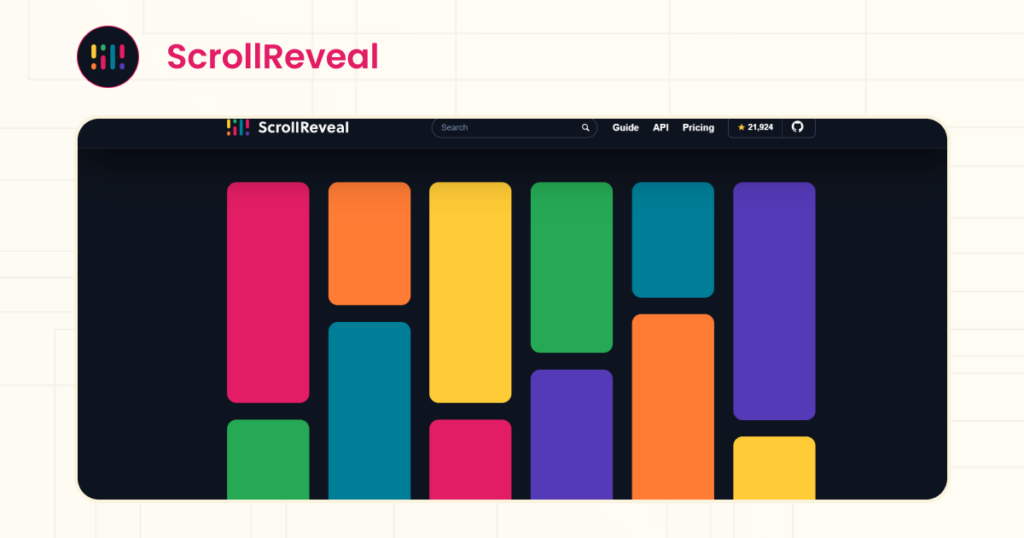
ScrollReveal is a lightweight JavaScript library designed to create easy scroll-based animations for web pages. It allows developers to animate elements as they enter the viewport, making your website more dynamic and engaging without much effort.
Features
- Easy setup with minimal code required
- Supports both desktop and mobile animations
- Optimized for performance, with lazy-loading animations
Use Cases
- Animating elements as users scroll through a webpage
- Creating fade-ins, slide-ins, and other visual effects when content enters the viewport
- Enhancing user engagement on landing pages, portfolios, and blogs
7. Mo.js
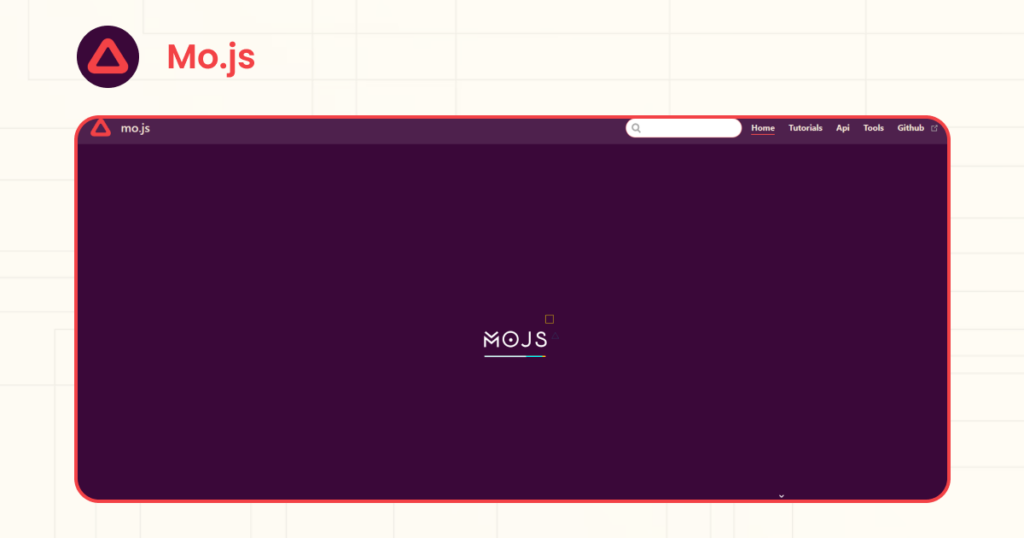
Mo.js is a cutting-edge motion graphics library that provides a fresh approach to web animation by focusing on shape and text animations. Unlike other libraries that primarily animate DOM elements and CSS properties, Mo.js specializes in generating dynamic visual effects that are highly customizable and aesthetically pleasing. Its modular architecture allows developers to craft custom animations by combining different modules or extending them to suit specific needs.
Mo.js offers unique features like burst animations, timeline control, and staggered animations, making it an excellent choice for animating logos, buttons, loaders, and other UI elements with a modern, creative flair. With its lightweight size and powerful capabilities, Mo.js is favoured by designers and developers looking to push the boundaries of traditional web animations.
Features
- Animates shapes with customizable effects.
- Creates animated text effects.
- Easily extendable with modular plugins.
Use Cases
- Enhances visual appeal with creative animations.
- Animates logos and branding elements.
- Adds engaging loading animations to web pages.
8. Velocity.js
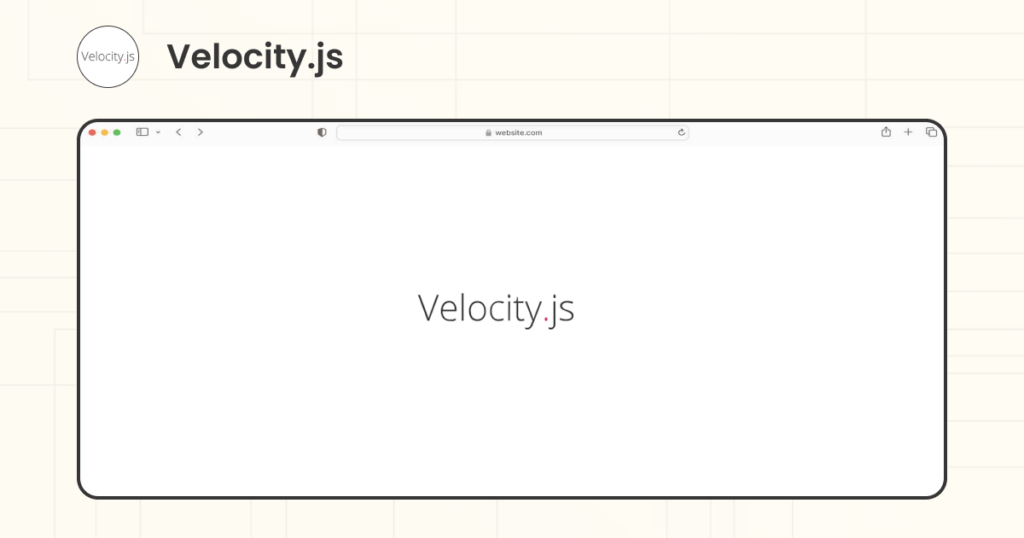
Velocity.js is a highly performant JavaScript animation engine designed to offer fast, smooth animations with a syntax similar to jQuery’s $.animate() method. It is an excellent choice for developers who prioritize performance, particularly in environments where frame rates and responsiveness are crucial, such as mobile applications.
Velocity.js is highly optimized for modern browsers and minimizes jank, ensuring animations run smoothly even under high stress. Beyond DOM manipulation, it can animate CSS transforms, colors, scroll animations, and SVG elements, making it a flexible solution for basic and complex animation needs.
Features
- It is optimized for faster animations.
- Supports both SVG and DOM elements.
- Smooth transitions between states.
Use Cases
- Suitable for animations in mobile web apps.
- Enhances scroll-triggered animations.
- Animates complex user interface components.
9. Popmotion
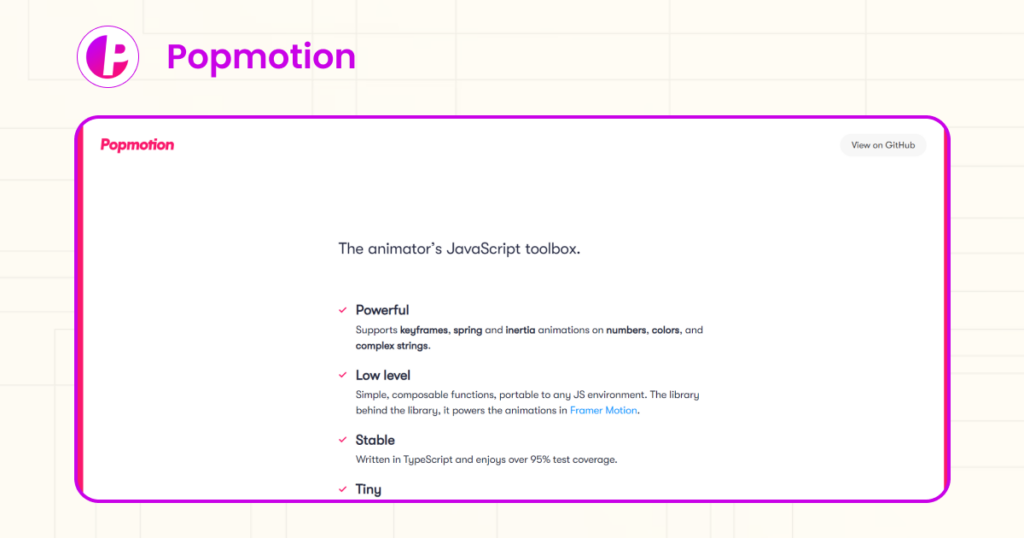
Popmotion is a functional animation library for JavaScript that simplifies the creation of animations and interactions. It provides low-level building blocks and utilities to construct custom animations, physics-based motion, and complex user interactions.
Features
- Supports tweens, keyframes, physics-based animations, and decay
- Lightweight with modular components
- Provides simplified animation controls for DOM, SVG, and CSS elements
Use Cases
- Building complex animations for user interfaces
- Creating physics-based motions such as bounces, inertia scrolling, or spring effects
- Enhancing user experience with choreographed animations on interactive apps
10. Typed.js
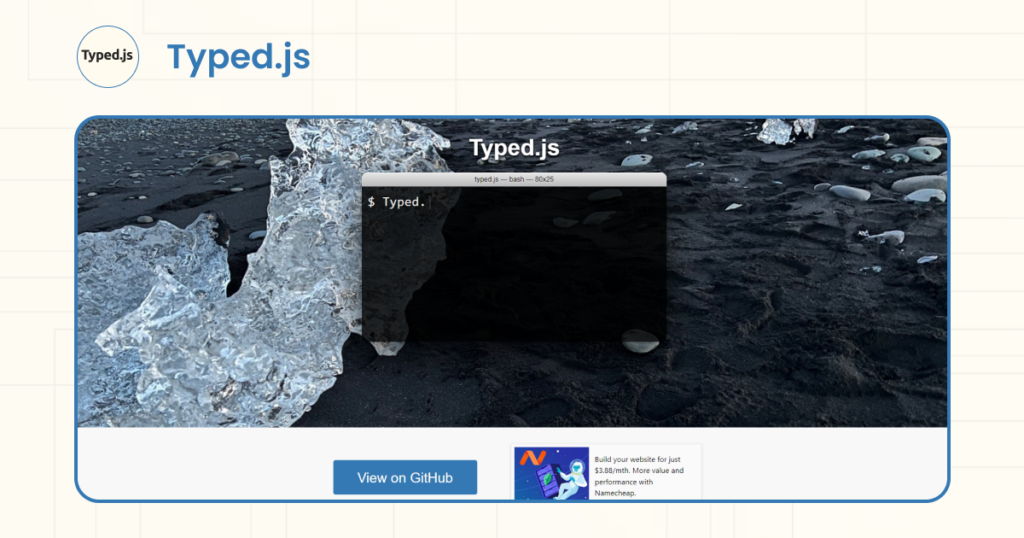
Typed.js is a library that simulates the typing effect on web pages. This lightweight tool is perfect for creating dynamic text that appears to be typed in real time, which can add a personal or interactive feel to your site.
Features
- Automatically types out dynamic text with customizable speed
- Supports string replacement and looping
- Easy to configure and lightweight
Use Cases
- Typing effects for hero sections or introductions
- Highlighting dynamic content or product features
- Simulating conversations or coding demonstrations on websites
Conclusion
JavaScript animation libraries have revolutionized web development, offering creative and practical tools to enhance websites’ visual appeal and interactivity. By integrating animations effectively, developers can boost user engagement, convey information dynamically, and create more memorable online experiences.
However, balancing visual flair and performance is essential to ensure that animations contribute positively to the user experience. With the right approach, animations can transform static designs into lively, responsive, and engaging interfaces that captivate users and elevate the overall quality of a web project.

